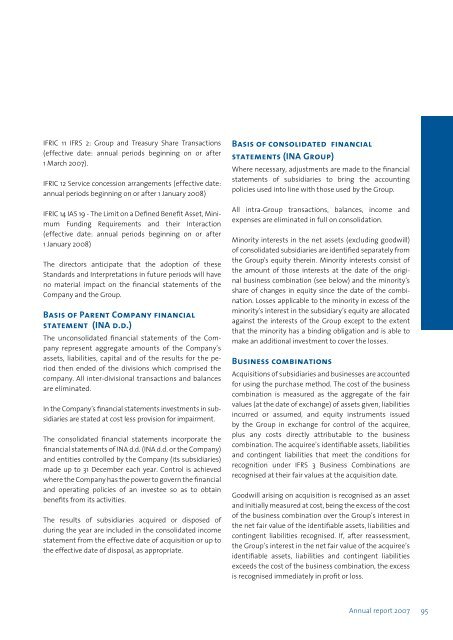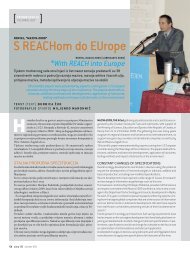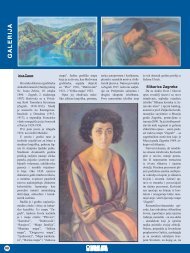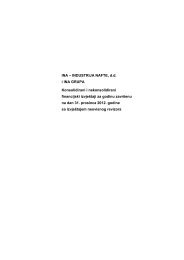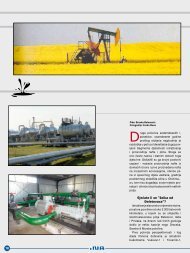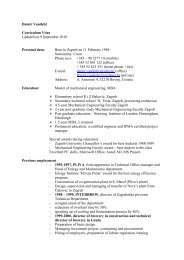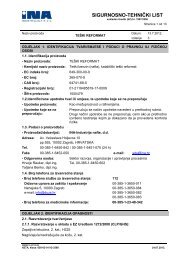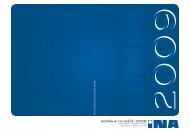Open - Ina
Open - Ina
Open - Ina
- No tags were found...
You also want an ePaper? Increase the reach of your titles
YUMPU automatically turns print PDFs into web optimized ePapers that Google loves.
IFRIC 11 IFRS 2: Group and Treasury Share Transactions(effective date: annual periods beginning on or after1 March 2007).IFRIC 12 Service concession arrangements (effective date:annual periods beginning on or after 1 January 2008)IFRIC 14 IAS 19 - The Limit on a Defined Benefit Asset, MinimumFunding Requirements and their Interaction(effective date: annual periods beginning on or after1 January 2008)The directors anticipate that the adoption of theseStandards and Interpretations in future periods will haveno material impact on the financial statements of theCompany and the Group.Basis of Parent Company financialstatement (INA d.d.)The unconsolidated financial statements of the Companyrepresent aggregate amounts of the Company’sassets, liabilities, capital and of the results for the periodthen ended of the divisions which comprised thecompany. All inter-divisional transactions and balancesare eliminated.In the Company’s financial statements investments in subsidiariesare stated at cost less provision for impairment.The consolidated financial statements incorporate thefinancial statements of INA d.d. (INA d.d. or the Company)and entities controlled by the Company (its subsidiaries)made up to 31 December each year. Control is achievedwhere the Company has the power to govern the financialand operating policies of an investee so as to obtainbenefits from its activities.The results of subsidiaries acquired or disposed ofduring the year are included in the consolidated incomestatement from the effective date of acquisition or up tothe effective date of disposal, as appropriate.Basis of consolidated financialstatements (INA Group)Where necessary, adjustments are made to the financialstatements of subsidiaries to bring the accountingpolicies used into line with those used by the Group.All intra-Group transactions, balances, income andexpenses are eliminated in full on consolidation.Minority interests in the net assets (excluding goodwill)of consolidated subsidiaries are identified separately fromthe Group’s equity therein. Minority interests consist ofthe amount of those interests at the date of the originalbusiness combination (see below) and the minority’sshare of changes in equity since the date of the combination.Losses applicable to the minority in excess of theminority’s interest in the subsidiary’s equity are allocatedagainst the interests of the Group except to the extentthat the minority has a binding obligation and is able tomake an additional investment to cover the losses.Business combinationsAcquisitions of subsidiaries and businesses are accountedfor using the purchase method. The cost of the businesscombination is measured as the aggregate of the fairvalues (at the date of exchange) of assets given, liabilitiesincurred or assumed, and equity instruments issuedby the Group in exchange for control of the acquiree,plus any costs directly attributable to the businesscombination. The acquiree’s identifiable assets, liabilitiesand contingent liabilities that meet the conditions forrecognition under IFRS 3 Business Combinations arerecognised at their fair values at the acquisition date.Goodwill arising on acquisition is recognised as an assetand initially measured at cost, being the excess of the costof the business combination over the Group’s interest inthe net fair value of the identifiable assets, liabilities andcontingent liabilities recognised. If, after reassessment,the Group’s interest in the net fair value of the acquiree’sidentifiable assets, liabilities and contingent liabilitiesexceeds the cost of the business combination, the excessis recognised immediately in profit or loss.Annual report 200795


